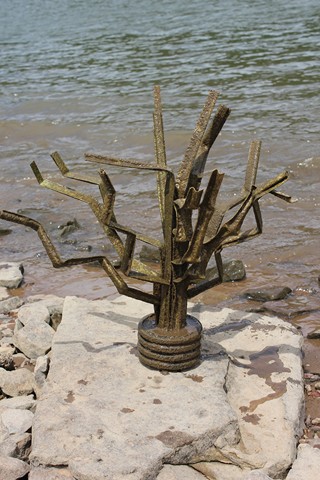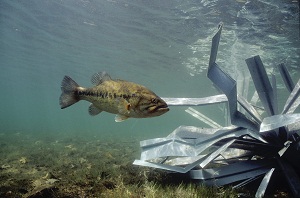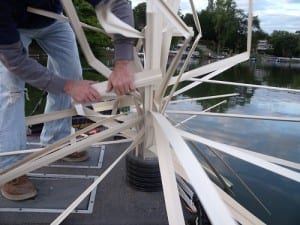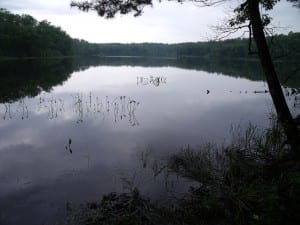That’s right, Iowa…not the first place that comes to mind when we’re talking fishing. Usually it’s whitetail deer, farming and the like. Did you know that Iowa has tons of lakes, ponds and streams?
Fish of all species abound in the public and private waters throughout the state. When managing these waters, professionals like Ryan McCaw help achieve clients goals, be it a small pond or large lake/waterway system. See the dozens of unique artificial fish habitat models, fish attractors and fish cover used at fishiding.com, the leader in science based, proven, fish protection.
Weed control is a major part of any lake or pond owner’s concerns. What about swimming, fish stocking and water clarity? Can I get a fountain or one of those aerator things? These guys have the skills to enhance your property in ways most of us can only imagine. We are proud to announce the newest addition to our network of dealerships.

Rooted in Iowa, LLC
Efficient POND Management
About Efficient Pond Management
Efficient Pond Management was founded in efforts to educate and assist pond owners in how to manage the valuable resource they have. Government agencies would come out if time permitted to consult and advise, but they could only do so much for the private pond owner. Mail order and internet companies are always more than happy to consult over the phone and sell their products, but most times it takes a professional on site to really get to the heart of the matter. Efficient Pond Management was designed to fill that void for you. We provide a live person on site to assess your pond to determine #1 what condition the pond is currently in with any problems diagnosed and #2 offer solutions that can correct those underlying problems. Our level of involvement is dictated by you, the pond owner, as we devise a plan that fits into your goals and budget.
We are proudly partnered with All Things Water out of Elkhart, IN. A company with over 11 years of experience in all facets of pond and lake management including large scale aquatic plant harvesting and dredging. We have the knowledge and resources to complete any job when it comes to lake and ponds and will provide you with our best efforts and results that will please you with a beautiful pond.
We also have a network of service professionals in related fields that may be very useful in your project. Heartland Habitat from Princeton, Illinois is one such company. They specialize in land management and food plots to enhance biodiversity increasing the beauty and attracting wildlife. Typically, stable and densely vegetated land surrounding a pond leads to a more stabile and healthy pond.
An active member of the Midwest Aquatic Plant Management Society. The mission of MAPMS is to promote sound and appropriate technologies for the management of aquatic vegetation, provide opportunities for the educational advancement of its members and encourage relevant scientific research. Among others.
Please feel free to contact us at:
563-370-6608
ryan@efficientpondmanagement.com
Services:
- Aeration
- Aquatic Herbicides
- Dredging
- Enzyme Bio-augmentation
- Fishery Management
- Pond Assessments
- Pond Repairs
- Services Overview
- Water Garden
- Weed Harvesting
Efficient Pond Management was founded with the goal of assisting private pond owners in Eastern Iowa and Western Illinois with on site personal service. We will work with you to achieve your goals and provide you with a well managed pond for you to enjoy for years to come.
Don’t assume that your pond is to big or too small for us to handle.
We have the equipment to fit your situation.
Our network includes a close partnership with All Things Water who has over a decade of experience in all aspects of pond management and specialize in large scale aquatic plant harvesting and dredging using the Aquamog pictured on the right. This unique dredge can reach many areas not available to long reach excavators, removes solid material with very little water and only needs one access point to complete the work while leaving 99% of the shoreline untouched.
An active member of the Midwest Aquatic Plant Management Society. The mission of MAPMS is to promote sound and appropriate technologies for the management of aquatic vegetation, provide opportunities for the educational advancement of its members and encourage relevant scientific research. Among others.
We also have a network of related businesses such as Heartland Habitat. Specializing in terrestrial land management that naturalizes an area to increase the beauty and draw in wildlife. This will make your pond even more attractive and stabilize the land surrounding the water. Dense plant growth around a pond absorbs nutrients before they even enter the water and reduces aquatic plant growth and algae blooms. Pictured below are examples of how their services tie in with ours.
Fishery Management
Ponds provide some of the best fishing opportunities but need to be maintained and managed to keep them at optimal operational level. Whether it is a new pond that needs fish introduced or a an older pond that needs evaluated and possibly adjusted, we can provide you with assistance.
Fish Habitat
A good fishery must have habitat contained within the water at various levels. The fish of North America overwhelmingly use various structures throughout their lifecycle from berth to death. Lack of structure seriously limits the ability of a body of water to produce quality fish. Young fry need a place to hide and grow so at least some have a chance to become adults to replace the aging portion of the population that will eventually die off naturally. This habitat also provides a place for the base of the food chain, the microphytes, to grow to feed the zooplankton which in turn is food for the forage fish and so on to the apex predator of that pond. So as the fish grows and matures, it will return to this structure repeatedly for foraging opportunities to grow large and strong.
We offer FisHiding fish structures. Use our special Code found on our site when ordering from the FisHiding website for our exclusive discount.
Fish Survey
We are permitted in the state of Iowa as Scientific Collectors which allows us to perform fish surveys on your pond to determine the overall health of the fish contained. With this knowledge we can create a plan to follow to manage the existing population to create the fishery you prefer.
Fish Stocking
We carry an aquaculture license in the state of Iowa to provide fish stocking services should that be necessary to rejuvenate an old pond or get a new pond up and running. We will tailor the mix of fish introduced to maximize your fishing enjoyment.
Nuisaance Species – Rotenone
We are licensed to apply Rotenone in Iowa to a pond should you find that an exotic or undesireable species has overrun your waters. This application will terminate all fish life in the pond removing the nuisance species and allow you to stock the pond again with desired native fish species for your enjoyment.
This should give you some idea of the types of services Ryan and his crew provide. Visit the website or contact Ryan with any questions you may have.
Iowa has been in the news for getting kids involved in the outdoors and fishing. Take a look at this story posted just a few days back:
https://structurespot.com/conservation/urban-areas-among-sites-for-new-habitats-some-lakes-get-keeper-trout-for-the-kids/










